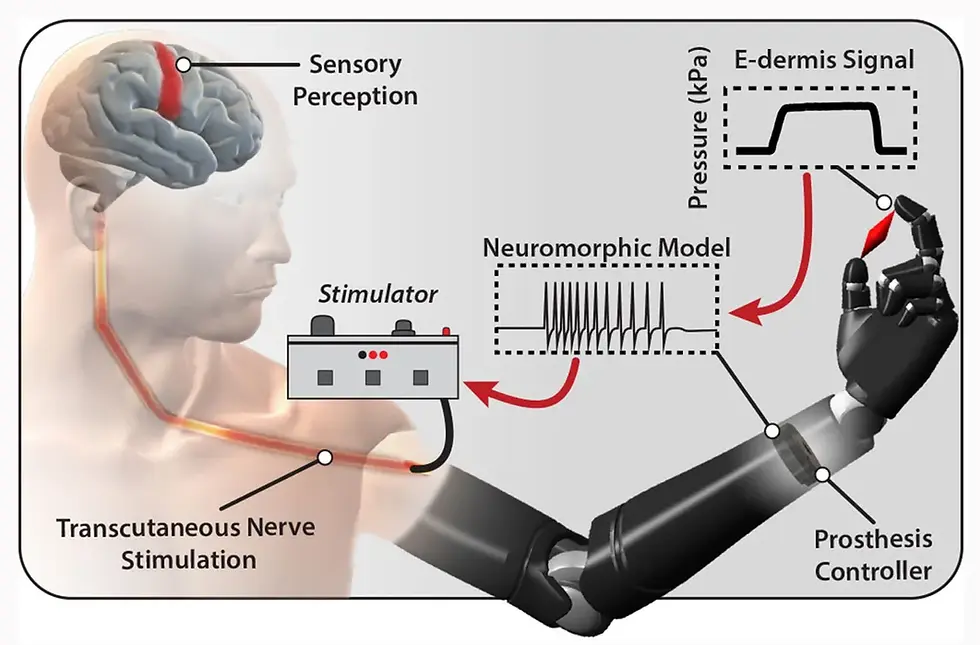Empowering Lives with Targeted Muscle Reinnervation (TMR) Prosthesis for Upper Limbs
- Quantum Education

- Nov 4, 2023
- 2 min read

Introduction:
In the ever-evolving world of prosthetics, innovations are providing amputees with newfound hope and opportunities to regain independence. Quantum Prosthetics, a pioneering leader in the field, is at the forefront of this transformation. Their groundbreaking development of Targeted Muscle Reinnervation (TMR) prostheses for upper limbs is changing the lives of individuals who have faced the challenges of limb loss. In this blog, we will delve into the remarkable impact of TMR specific prostheses and how Quantum Prosthetics is empowering individuals to reclaim control and improve their quality of life.
Understanding Targeted Muscle Reinnervation (TMR) Prostheses:
Targeted Muscle Reinnervation (TMR) prostheses are a cutting-edge solution that combines surgical precision with state-of-the-art prosthetic technology. These prostheses are specifically designed for individuals with upper limb amputations, providing them with a level of functionality and control that was once considered unattainable.
The Science Behind TMR:
TMR begins with a surgical procedure in which nerves from the amputated limb are rerouted to nearby, healthy muscles in the residual limb. This rerouting establishes a new neural pathway, allowing for more natural and intuitive control of the prosthetic limb.
Benefits of TMR Prostheses for Upper Limbs:
Improved Prosthetic Control: TMR prostheses significantly enhance control and functionality. Users can perform a wide range of movements with increased precision and accuracy, closely mirroring the actions of a natural limb.
Reduced Phantom Limb Sensations: Many upper limb amputees experience phantom limb sensations, such as pain or discomfort in the missing limb. TMR has been shown to alleviate or minimize these sensations, contributing to enhanced comfort and reduced distress.
Enhanced Quality of Life: With improved prosthetic control and reduced discomfort, TMR prostheses often result in an improved overall quality of life. Users regain the ability to perform everyday tasks more easily and independently.
Customized Prosthetic Functionality: Quantum Prosthetics tailors TMR prostheses to meet the individual's specific needs and lifestyle. This customization ensures that the prosthesis seamlessly integrates into the user's daily activities and requirements.
Expanded Possibilities: TMR prostheses enable users to engage in activities they may have thought were no longer accessible. This includes sports, hobbies, and a wide range of physical tasks that enhance their sense of empowerment and fulfillment.
The Quantum Prosthetics Difference:
Quantum Prosthetics stands out as an industry leader in creating TMR prostheses for upper limbs. Their commitment to excellence and innovation is changing the lives of individuals who have experienced limb loss. The precision and customization offered by Quantum Prosthetics are setting a new standard for prosthetic technology.
The Road Ahead:
The development of Targeted Muscle Reinnervation (TMR) prostheses by Quantum Prosthetics represents a turning point in the world of prosthetics. These prostheses offer individuals with upper limb amputations the chance to regain control, comfort, and, most importantly, their quality of life.
As prosthetic technology continues to advance, the future looks promising for those who have experienced limb loss. The ability to regain independence and lead fulfilling lives is now within reach, thanks to organizations like Quantum Prosthetics that are dedicated to pushing the boundaries of possibility.
In conclusion, Targeted Muscle Reinnervation (TMR) prostheses for upper limbs are a testament to human innovation and the pursuit of enhancing the lives of amputees. With the help of Quantum Prosthetics, individuals can look forward to prosthetic limbs that not only restore their mobility but also empower them to reclaim their sense of control and confidence.




Comments